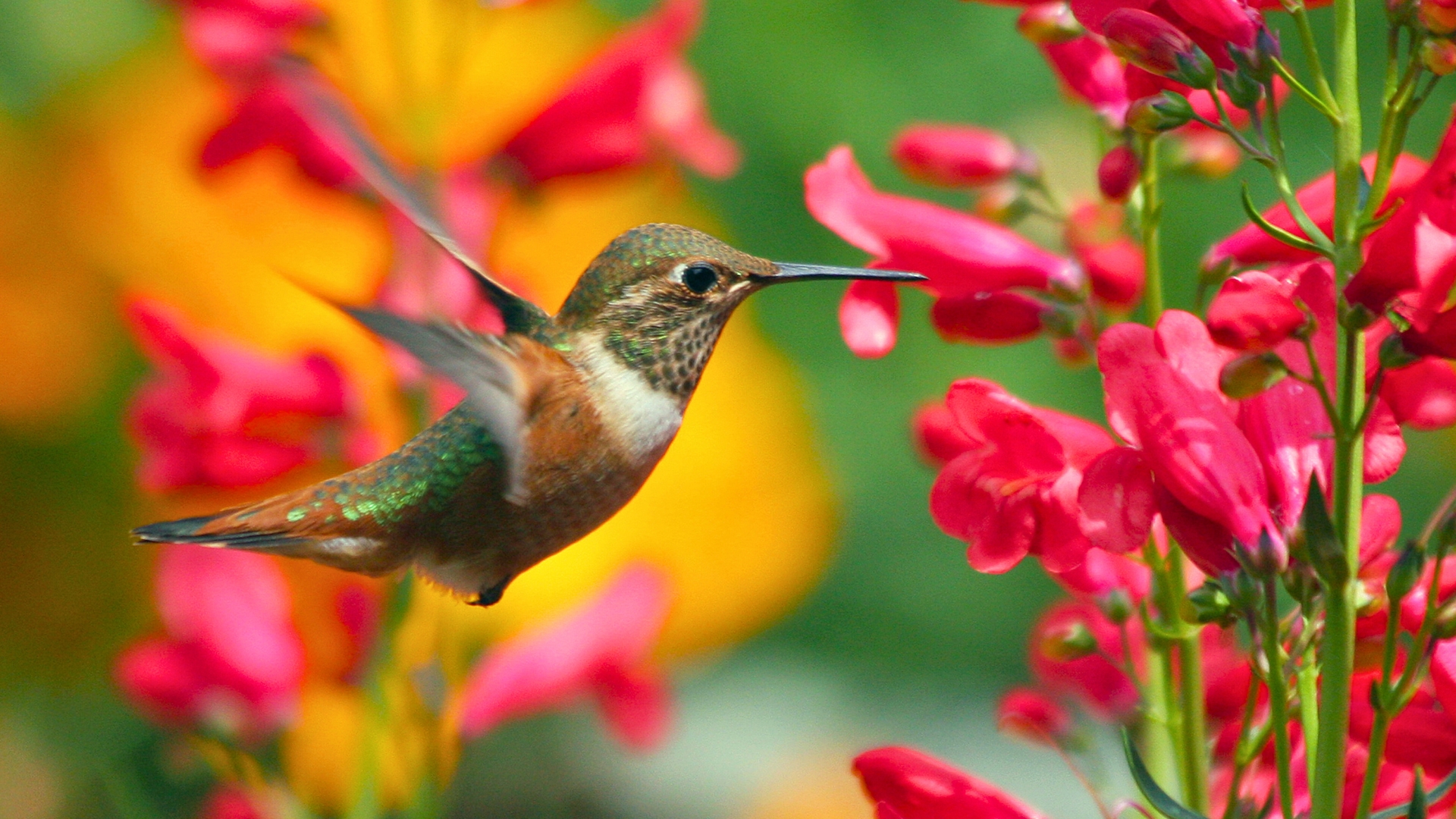Bring Your Garden To Life With These 15 Sweet-Smelling Flowers That Hummingbirds Can’t Resist
Nothing beats the charm of a garden buzzing with hummingbirds and bursting with sweet scents. I’ve planted a lot over the years, but there are some flowers that always win the hummingbirds over.
These picks don’t just smell amazing—they’re like little magnets for those fast-fluttering visitors. If you’re looking to turn your garden into a hummingbird hangout, these flowers will do the trick.
Trust me, once they show up, you’ll be hooked too.
1. Trumpet Vine
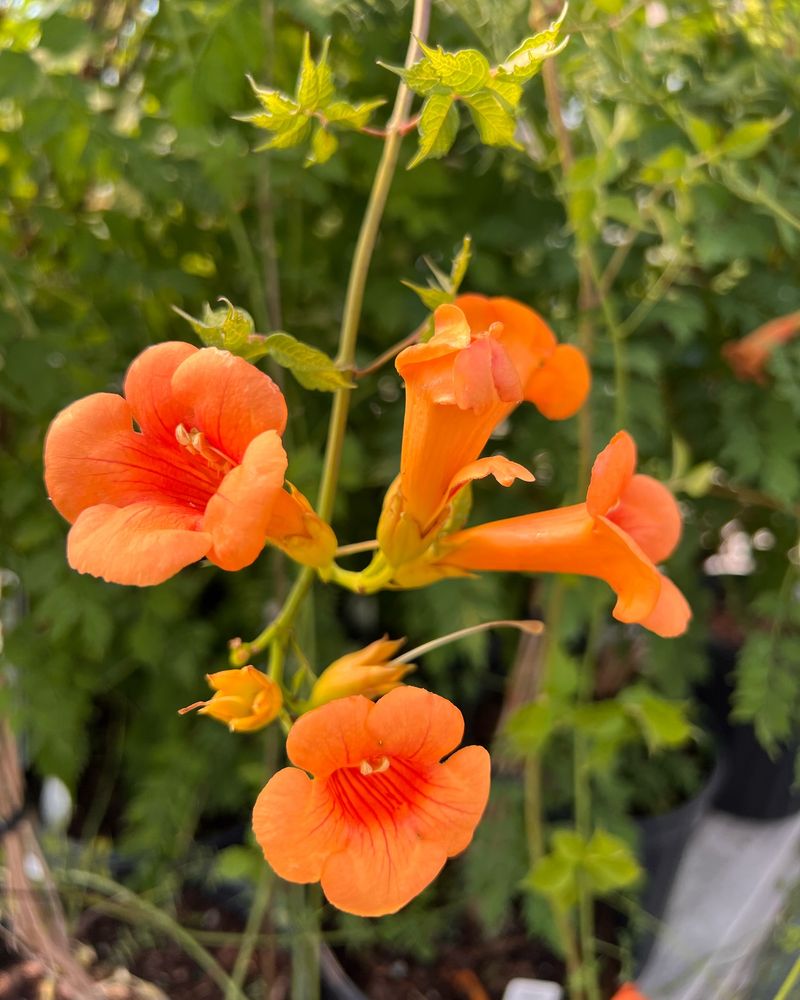
Nothing says “come and get it” to hummingbirds quite like these dramatic orange-red tubular flowers. The nectar hides deep inside, perfect for long hummingbird bills to reach.
Also called Cow-itch vine, this vigorous climber can reach 30-40 feet if not kept in check. Native to eastern North America, it’s drought-tolerant once established and blooms throughout summer with a light, sweet fragrance.
2. Bee Balm
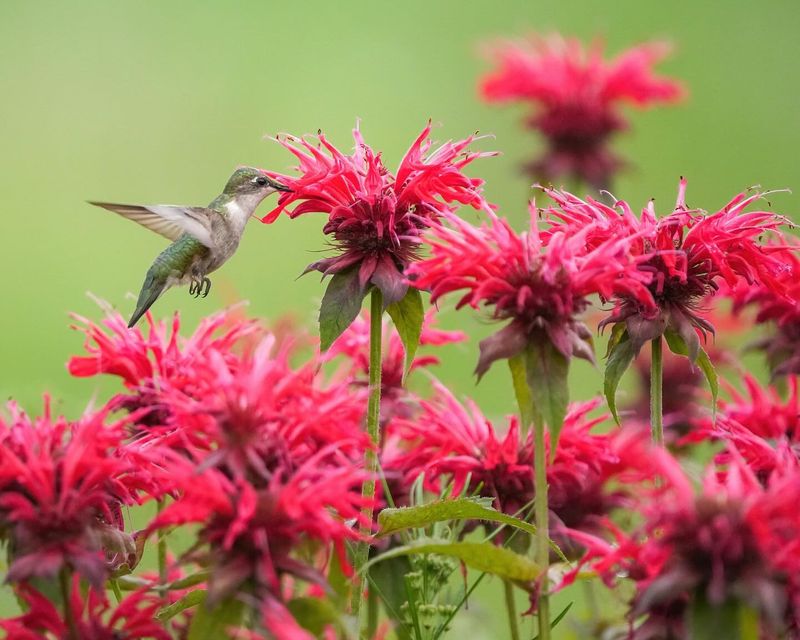
With spiky, crown-like blooms in shades of red, pink, and purple, bee balm creates quite the garden spectacle. The minty fragrance isn’t just appealing to humans—hummingbirds find it irresistible too.
Native to North America, this perennial reaches 2-4 feet tall and spreads readily. Beyond attracting wildlife, the leaves can be dried for aromatic teas. Plant in full sun to partial shade for best flowering results.
3. Cardinal Flower
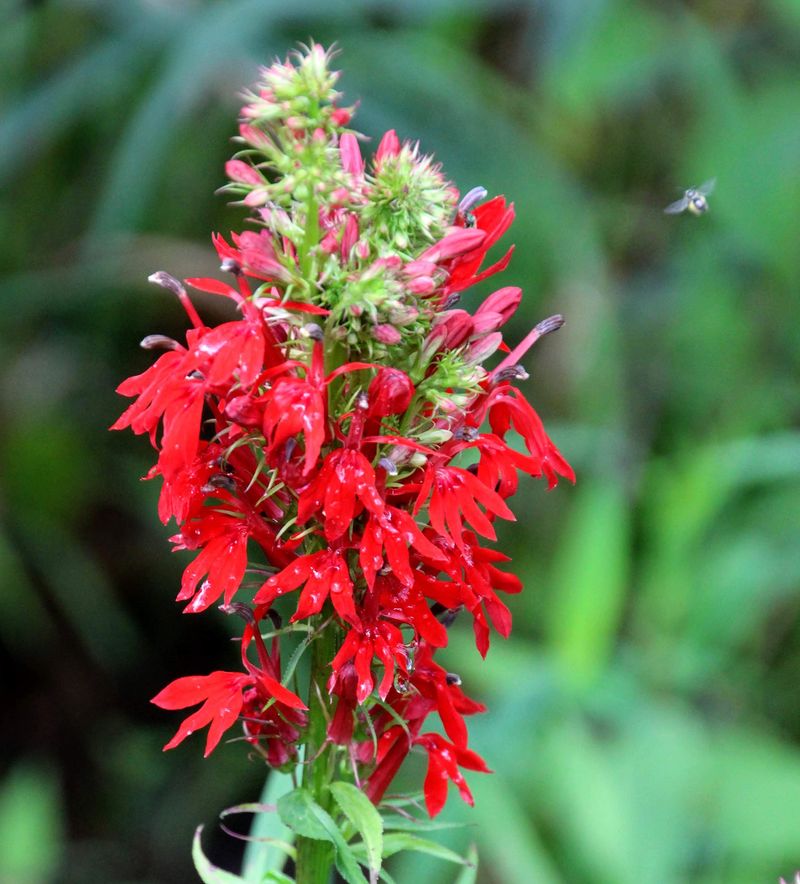
Few flowers match the brilliant red intensity of cardinal flower spikes that seem designed specifically for hummingbirds. Growing naturally along stream banks, this native perennial produces intense color from midsummer through fall.
Unlike many hummingbird plants, cardinal flower thrives in moist, even boggy conditions. The plant reaches 2-4 feet tall with tubular blooms that emit a subtle, sweet scent that helps guide tiny birds right to their nectar source.
4. Salvia
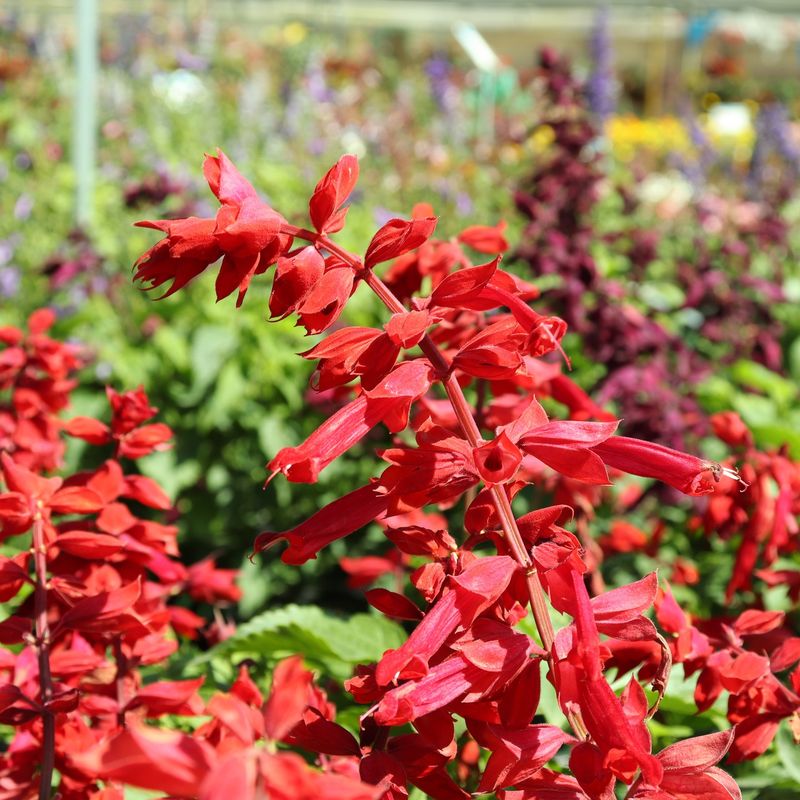
Garden salvias offer some of the most reliable hummingbird action you’ll ever witness. The tubular flowers come in vibrant reds, purples, and blues, creating a buffet of options for these tiny aerial acrobats.
Many varieties offer a pleasant sage-like aroma that wafts through the garden on warm days. Drought-tolerant and long-blooming, salvias keep producing flowers from spring until frost, making them one of the best investments for a hummingbird garden.
5. Honeysuckle
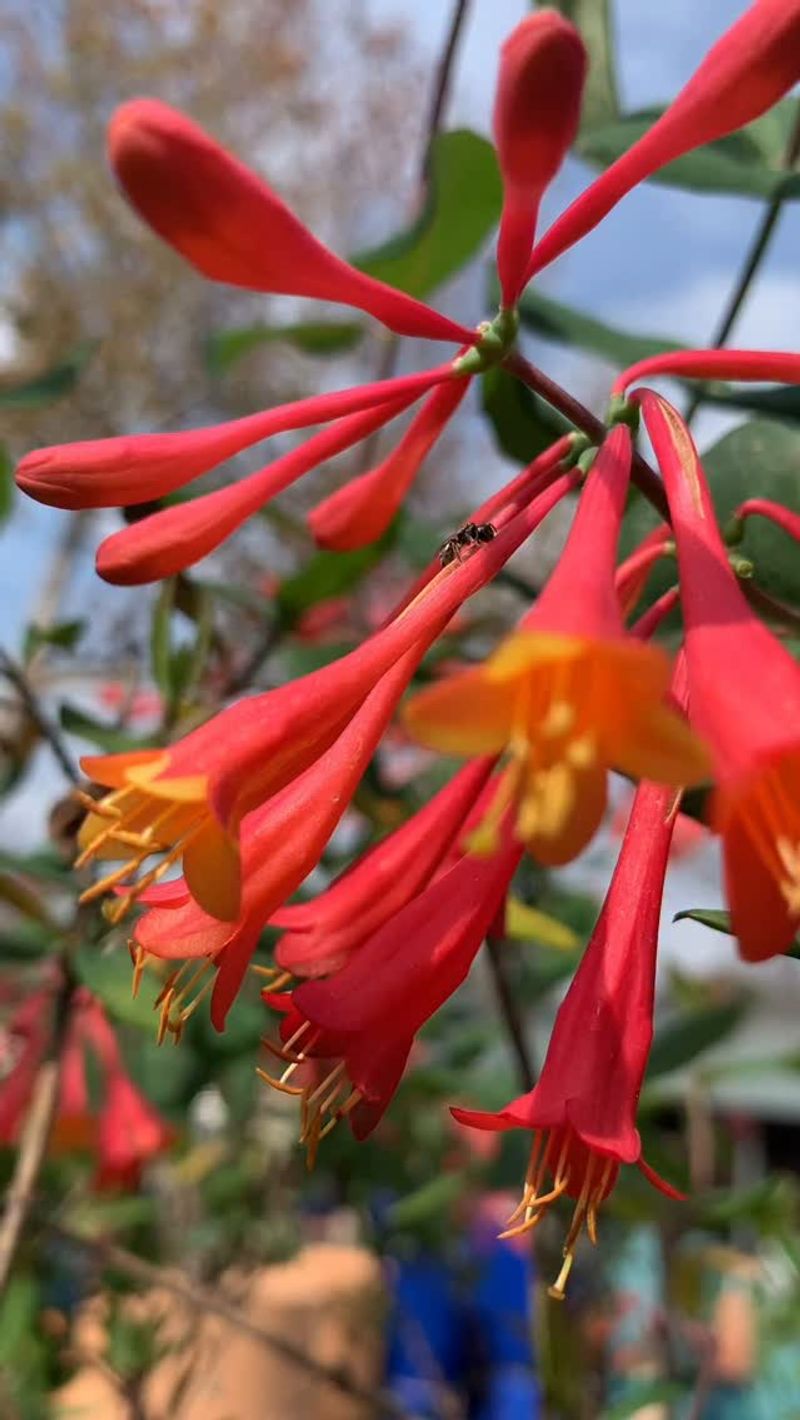
The intoxicating fragrance of honeysuckle vines can fill an entire garden with sweetness on summer evenings. Hummingbirds are drawn to the tubular yellow, orange, or pink flowers that are perfectly shaped for their long bills.
Choose native varieties like trumpet honeysuckle instead of invasive Japanese types. These vigorous climbers can cover fences, trellises, or arbors with flowers from late spring through summer, creating vertical interest while serving as natural hummingbird feeders.
6. Penstemon
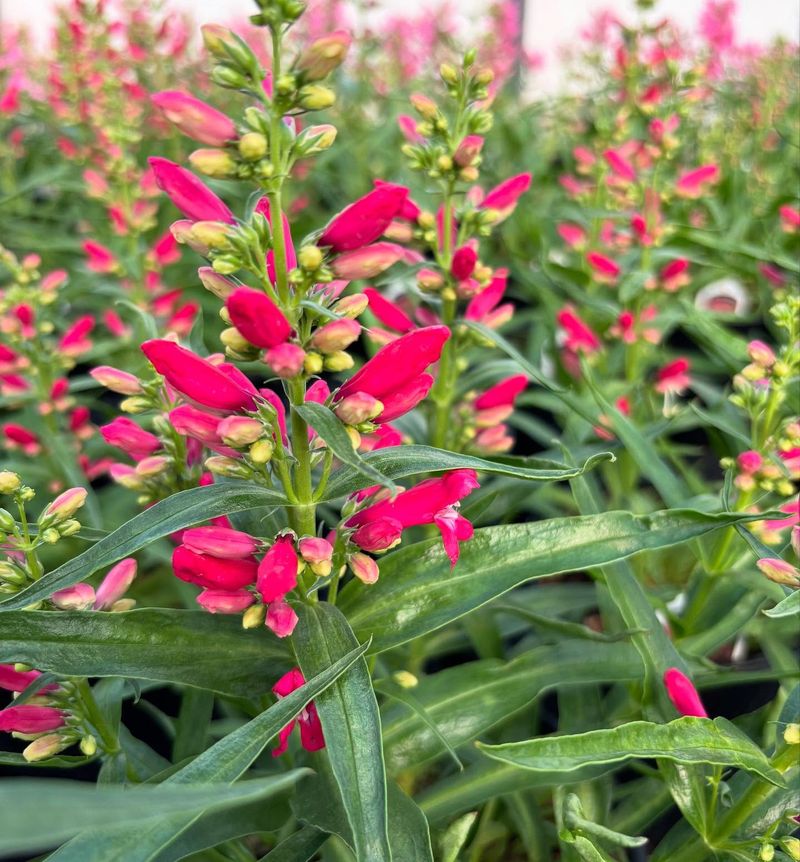
Often called beardtongue for the fuzzy stamen that protrudes from each flower, penstemons create dramatic spires of tubular blooms. Their bell-shaped flowers in reds, purples, and pinks are perfectly sized for hummingbird bills.
Native to North America, these drought-tolerant perennials offer a light, sweet scent that’s most noticeable up close. Different varieties bloom from spring through fall, making them ideal for providing continuous nectar for hungry hummingbirds throughout the growing season.
7. Columbine

With delicate spurred flowers that dangle like tiny lanterns, columbines create enchanting garden scenes. The unique shape features nectar spurs that perfectly accommodate a hummingbird’s bill, creating an ideal feeding station.
These spring-blooming perennials offer a light, sweet fragrance and come in nearly every color imaginable. Native varieties are especially valuable for supporting local hummingbird populations. Plant in dappled shade for longest-lasting blooms in most regions.
8. Foxglove
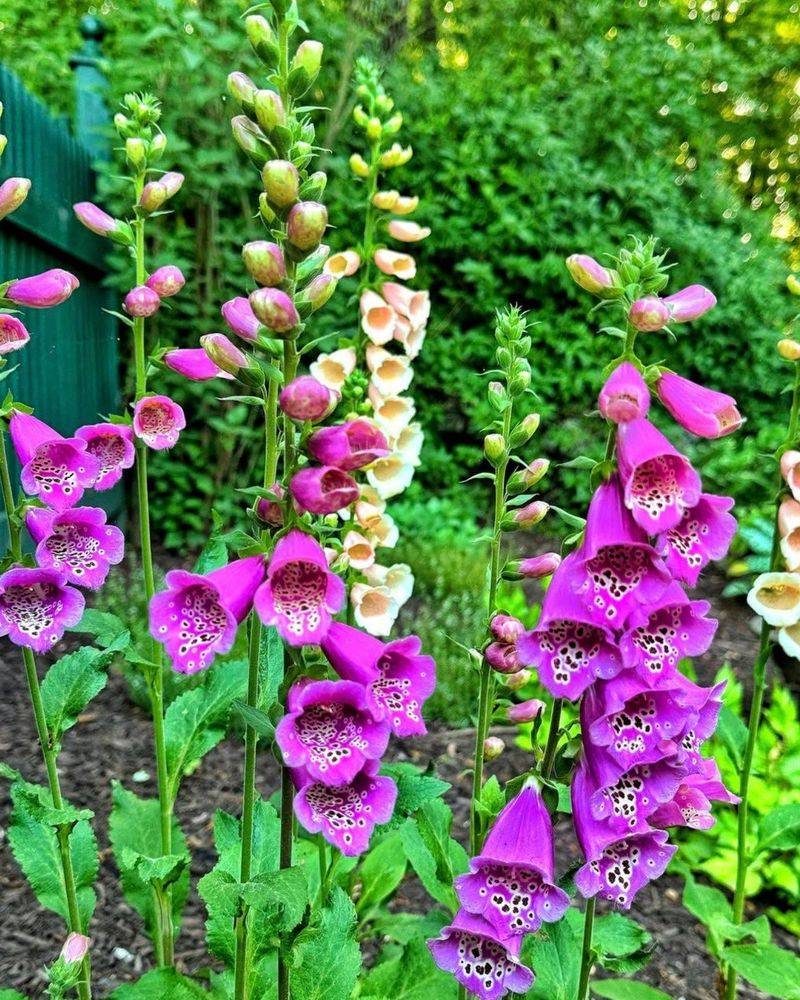
Standing tall with spires of spotted, tubular bells, foxgloves create vertical drama that hummingbirds can’t resist. The flowers hang downward, perfect for hovering birds to access with their specialized bills.
Though typically considered bumblebee plants, these biennial or short-lived perennials produce a subtle sweet scent that attracts hummingbirds too. Plant them in groups for maximum impact, and they’ll self-seed to create continuous displays year after year in partial shade locations.
9. Phlox
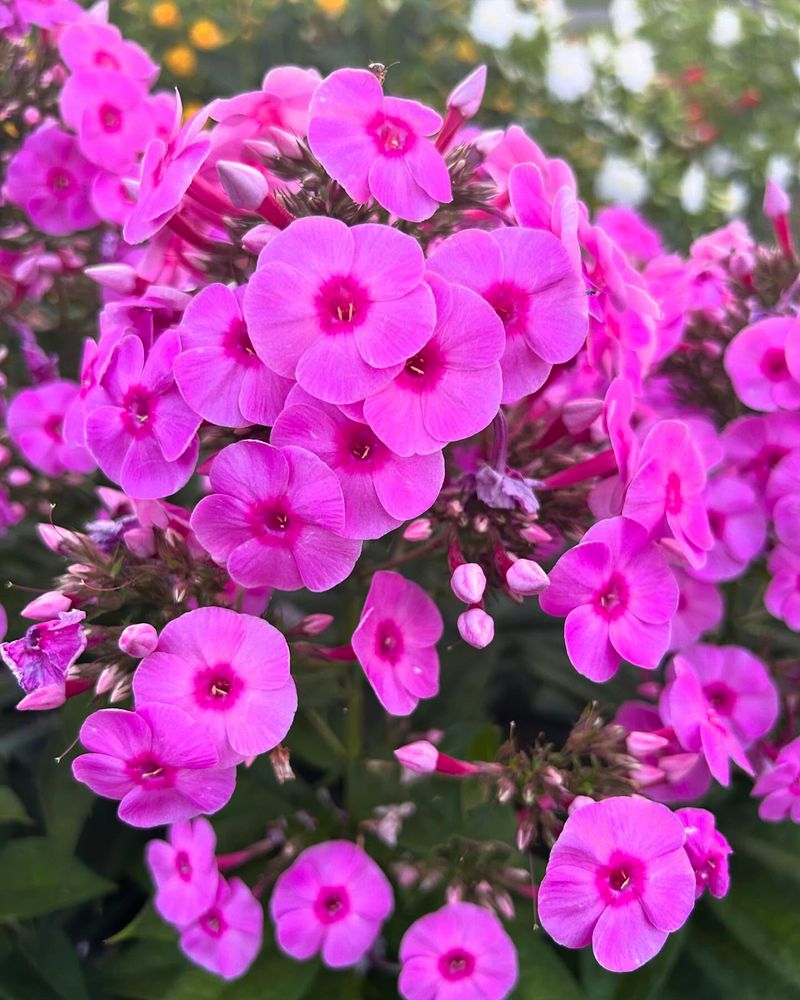
Sweet fragrance wafts from clusters of star-shaped phlox flowers, creating an aromatic beacon for hummingbirds. Both tall garden phlox and low-growing creeping varieties offer nectar-rich blooms that support these tiny birds.
Available in shades from pure white to deep purple, these native North American perennials bloom for weeks in summer. Plant different varieties to create months of continuous flowering, providing reliable nectar sources from spring through fall for hungry hummingbirds.
10. Butterfly Bush

Despite its name, butterfly bush attracts far more than just butterflies. The long panicles of tiny, tubular flowers create a nectar buffet that hummingbirds visit repeatedly throughout the day.
The honey-sweet fragrance intensifies in warm sunshine, broadcasting its presence to passing birds. Choose compact, non-invasive varieties in purple, pink, or white. These quick-growing shrubs bloom from summer until frost, providing reliable nectar sources when many other plants have finished flowering.
11. Agastache
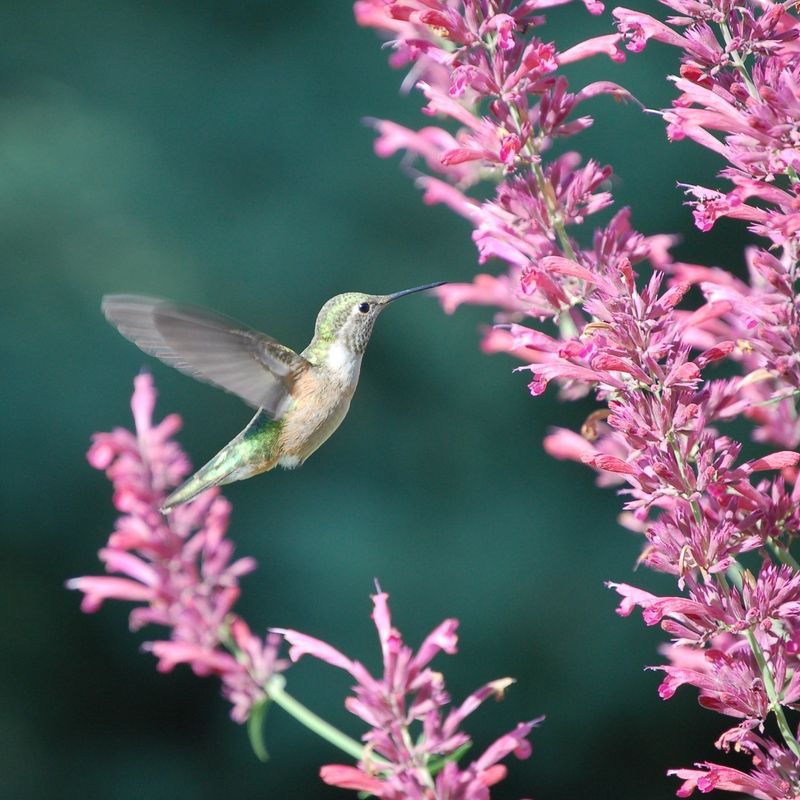
Commonly called hyssop or hummingbird mint, agastache combines visual appeal with an intoxicating fragrance. The licorice-mint scent fills the garden while spikes of tubular flowers in purples, blues, and oranges attract hummingbirds for weeks.
Drought-tolerant and deer-resistant, these perennials thrive in hot, sunny locations. Native varieties are especially valuable for supporting local wildlife. Plant several types together for a long season of blooms that will keep hummingbirds returning daily.
12. Fuchsia
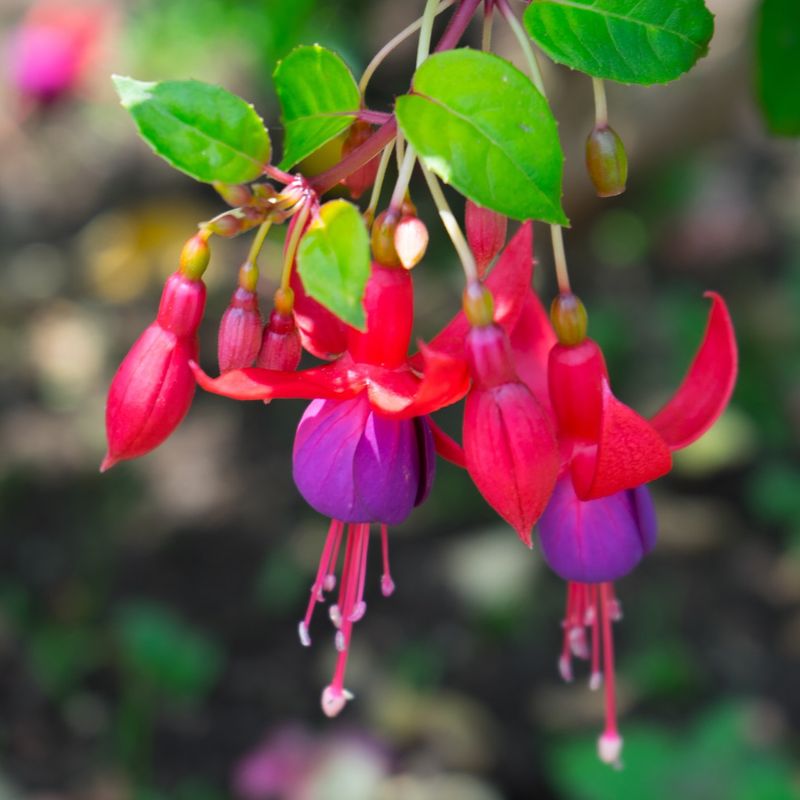
Dangling like exotic earrings, fuchsia blooms create living jewelry for the garden that hummingbirds find irresistible. The pendulous flowers in combinations of pink, purple, red and white hang at perfect heights for hovering birds.
Most varieties offer a subtle, sweet fragrance that intensifies in the warmth of afternoon sun. Perfect for hanging baskets and containers, fuchsias thrive in partial shade and provide continuous blooms throughout summer and into fall with regular deadheading.
13. Coral Bells

Rising like tiny fireworks on slender stems, the flowers of coral bells create delicate sprays perfect for hummingbirds. While the colorful foliage often gets all the attention, the small tubular blooms are hummingbird magnets.
These woodland natives produce flower stalks up to 2 feet tall with dozens of bell-shaped blooms that emit a light, sweet fragrance. Modern varieties offer foliage in purple, silver, amber and more, making them beautiful garden additions even when not in flower.
14. Lantana

Clusters of tiny tubular flowers create colorful lantana heads that often feature multiple hues on a single plant. The strong, spicy-sweet fragrance broadcasts its presence to passing hummingbirds from quite a distance.
Heat-loving and drought-tolerant, lantana blooms continuously from spring until frost without deadheading. In warm climates, it grows as a woody shrub; in colder areas, it makes an excellent annual or container plant that provides reliable nectar sources all season long.
15. Nicotiana
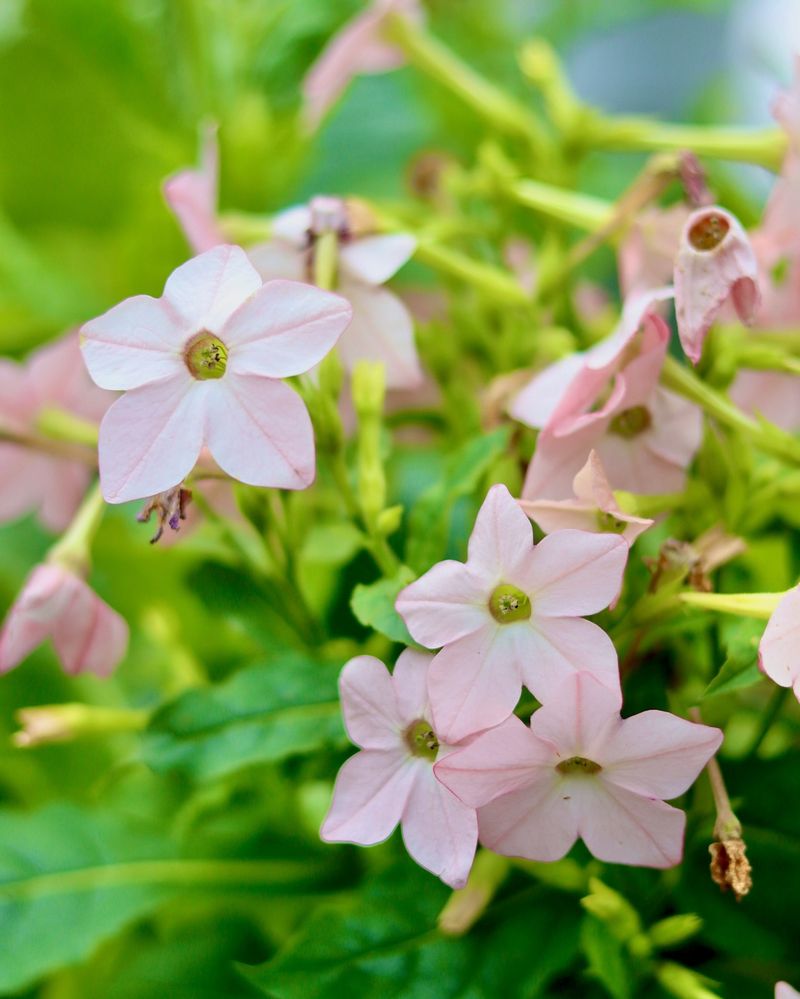
As evening approaches, flowering tobacco releases its intoxicating sweet perfume that draws hummingbirds for one last feeding before nightfall. The star-shaped or tubular flowers face upward in clusters atop tall stems.
While white varieties are most fragrant, nicotianas also come in lime green, pink, and red. These easy-growing annuals self-seed readily and bloom from summer until frost. Plant near patios to enjoy both the evening fragrance and the hummingbird visits.

